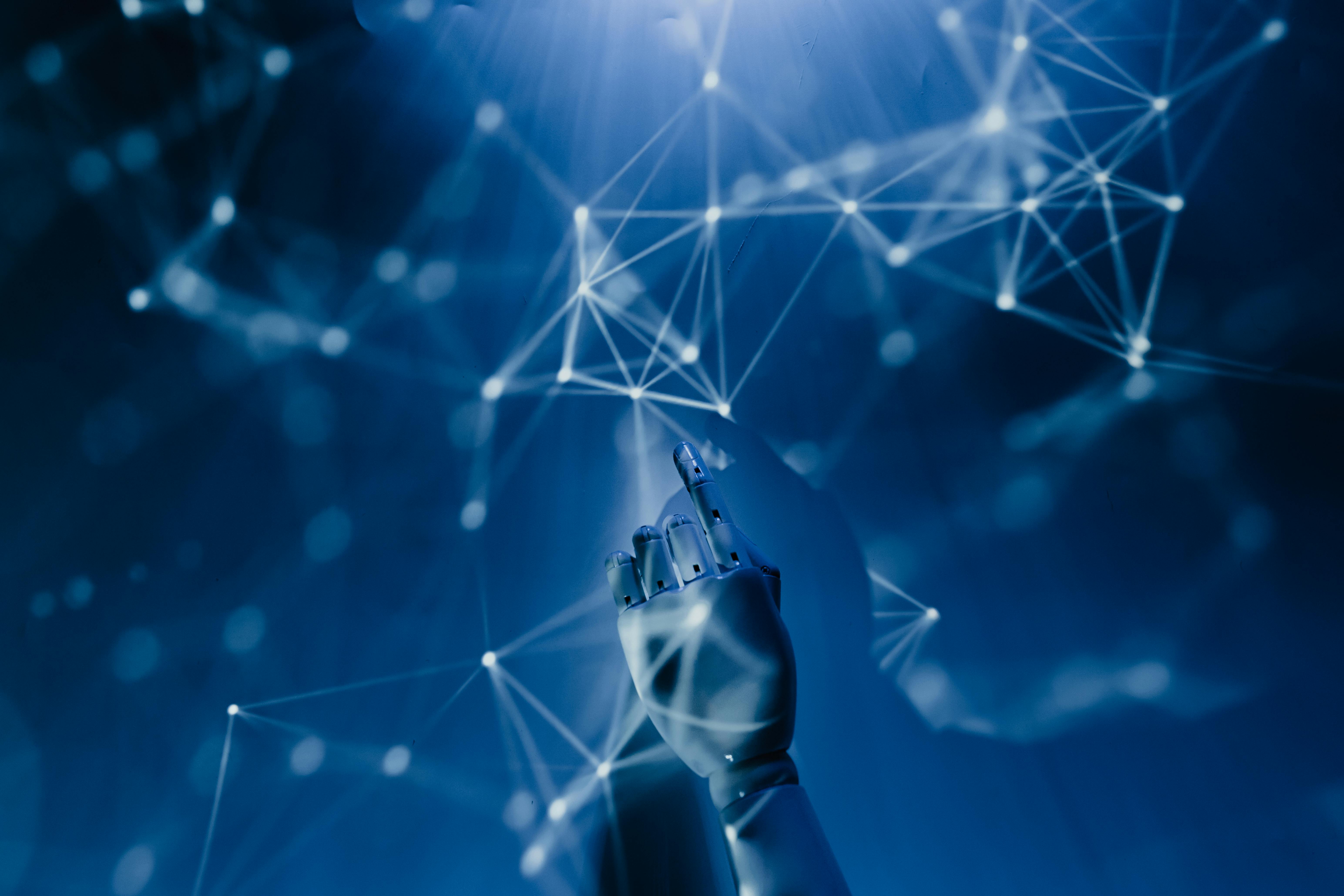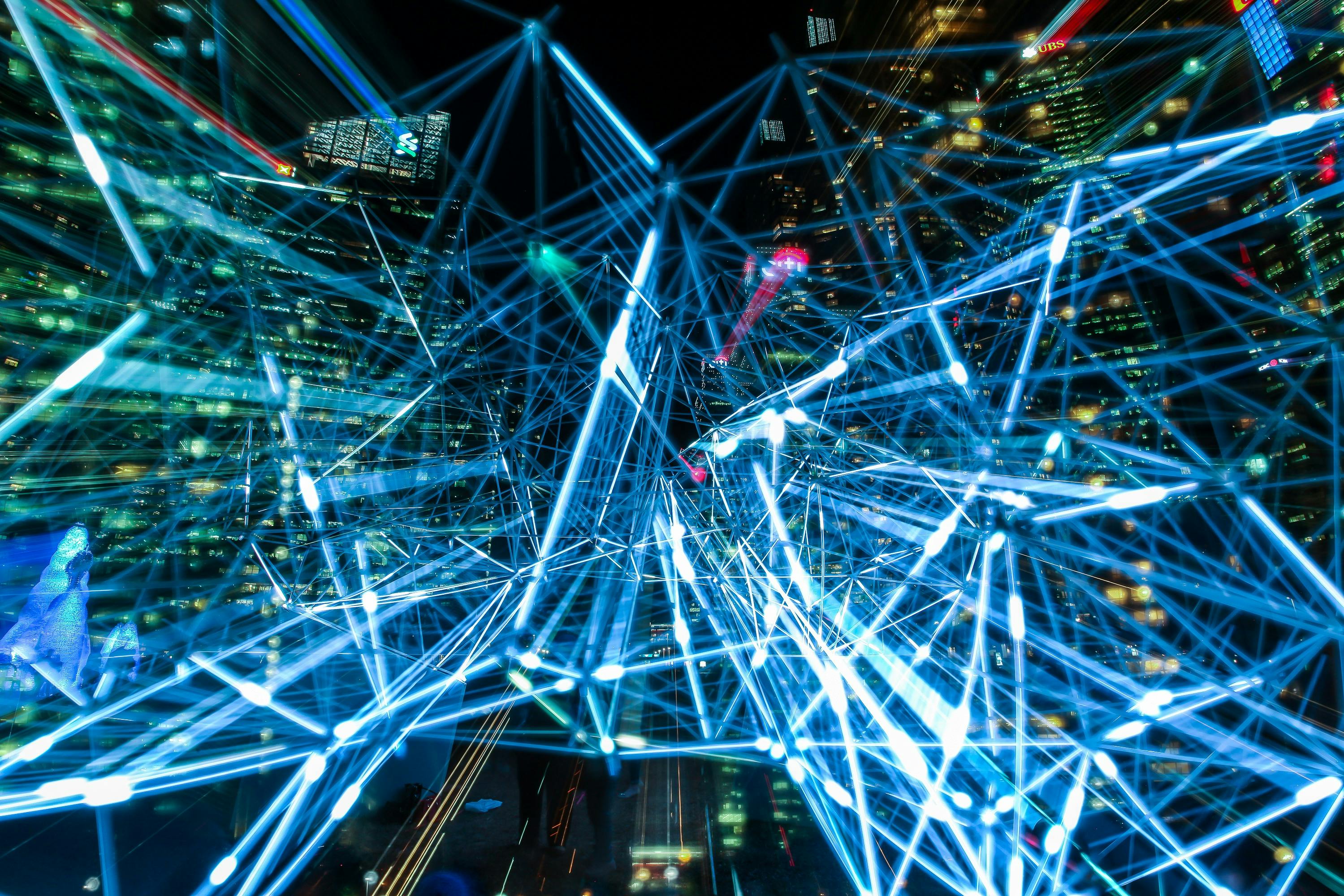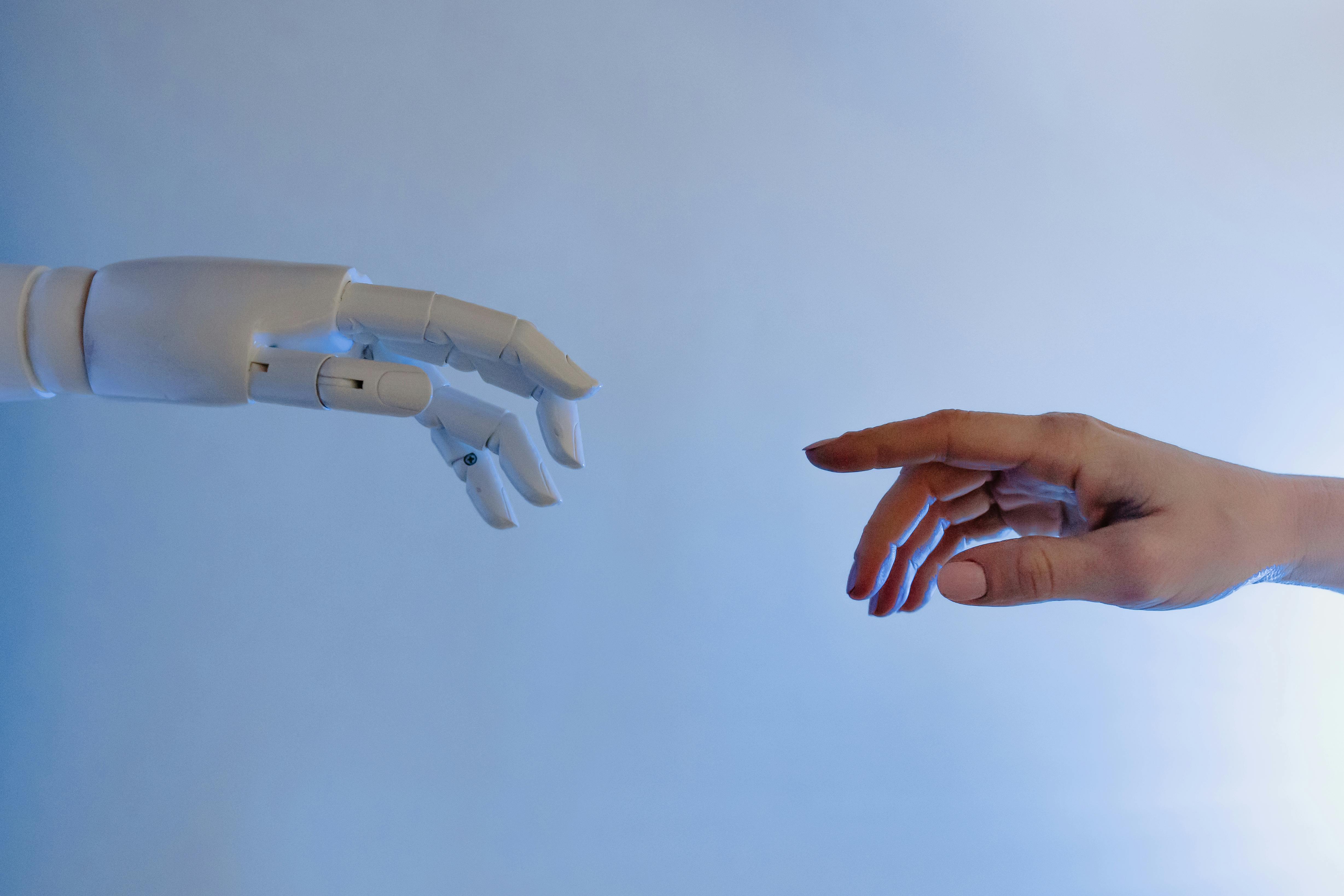
As we approach the year 2030, artificial intelligence stands at the threshold of a transformation so profound that it will fundamentally alter the fabric of human society. The coming decade promises to be the most revolutionary period in the history of AI development—one where the line between human and machine intelligence begins to blur in ways both exciting and challenging.
The Evolution of AI: Where We Stand Today
In 2025, we already live in a world where AI has become ubiquitous. Natural language models generate human-quality text, code, and creative content. Computer vision systems detect diseases earlier than the most skilled physicians. Autonomous vehicles navigate complex urban environments. Yet these achievements, impressive as they are, represent only the beginning of AI's potential.
The current generation of AI systems, while powerful, still operates within predefined domains and lacks the flexibility and generalization capabilities that characterize human intelligence. The large language models of today are primarily statistical prediction engines—sophisticated pattern-matching systems trained on vast datasets, but lacking true understanding of the concepts they manipulate.
However, the rapid pace of advancement suggests we're approaching inflection points that could fundamentally change this landscape. The emergence of multimodal AI systems that can seamlessly process text, images, audio, and video represents a crucial step toward more human-like intelligence. These systems demonstrate an early form of cross-domain reasoning that hints at the more sophisticated AI architectures to come.
The Path to Artificial General Intelligence (AGI)
Perhaps no concept in AI generates more excitement—and trepidation—than Artificial General Intelligence (AGI). Unlike today's narrow AI systems, which excel at specific tasks but struggle with anything outside their training domain, AGI would possess the flexible, adaptable intelligence that characterizes human cognition.
Leading AI researchers and organizations are taking increasingly bold stances on AGI timelines. OpenAI's leadership has suggested AGI could arrive within the next decade, while others like Demis Hassabis of DeepMind point to similar timeframes. These aren't idle speculations—they're informed predictions based on observed scaling laws, computational trends, and breakthrough discoveries in neural architecture design.
The journey toward AGI will likely unfold through several key technological developments:
Advanced Neural Architectures
The transformer architecture that powers today's large language models represents just one evolutionary step in neural network design. Researchers are already exploring hybrid architectures that combine the strengths of transformers with other approaches like retrieval-augmented generation, neuromorphic computing, and biologically-inspired learning mechanisms.
These next-generation architectures promise to address current limitations in reasoning, memory, and learning efficiency. For instance, new attention mechanisms are being developed that can handle much longer contexts—potentially processing entire books or scientific papers as single inputs rather than fragmented chunks.
Multimodal Integration and Embodied AI
True intelligence isn't just about processing text or images in isolation—it's about integrating information across multiple sensory modalities and understanding how that information relates to actions in the physical world. The next wave of AI development will focus heavily on systems that can see, hear, touch, and act in coordinated ways.
Companies like Tesla, Boston Dynamics, and emerging robotics startups are already demonstrating impressive capabilities in embodied AI. By 2030, we can expect to see AI systems that not only understand the world through multiple senses but can also manipulate it with human-level dexterity and spatial reasoning.
Industry Transformation: Sector-by-Sector Revolution
Healthcare: Precision Medicine and AI-Powered Diagnosis
Healthcare stands to be one of the most dramatically transformed industries by 2030. AI systems are already demonstrating superhuman performance in medical imaging, drug discovery, and diagnostic accuracy. By the end of the decade, we'll likely see the emergence of AI "co-pilots" that work alongside doctors to provide real-time diagnostic support, treatment recommendations, and patient monitoring.
Perhaps more revolutionary will be the shift toward predictive and preventive medicine. AI systems analyzing continuous health data from wearable devices, genetic information, and environmental factors will be able to predict health issues years before symptoms appear. This could fundamentally shift healthcare from a reactive to a proactive model, potentially adding years to human lifespan while dramatically reducing costs.
Education: Personalized Learning at Scale
The education sector will undergo a profound transformation as AI enables truly personalized learning experiences. By 2030, AI tutors will be capable of adapting their teaching methods in real-time based on each student's learning style, pace, and interests. These systems will provide 24/7 availability, infinite patience, and the ability to explain concepts in countless different ways until understanding is achieved.
Moreover, AI will democratize access to high-quality education worldwide. Language barriers will disappear as real-time translation and cultural adaptation become seamless. Students in remote areas will have access to the same quality of instruction as those in major metropolitan centers.
Scientific Research: Accelerating Discovery
AI is already accelerating scientific discovery across multiple fields, from protein folding prediction to materials science. By 2030, AI systems will likely be capable of formulating and testing hypotheses, designing experiments, and even making novel scientific discoveries with minimal human intervention.
This could compress research timelines from years to months or even weeks. Climate change solutions, new energy technologies, and breakthrough medical treatments could emerge at an unprecedented pace, driven by AI systems that can process and synthesize information across vast scientific literature and experimental data.
Economic Implications: The Transformation of Work
The economic implications of AI advancement by 2030 are both profound and complex. While AI will undoubtedly automate many existing jobs, it will also create entirely new categories of work and potentially unleash productivity gains that benefit society broadly.
Job Displacement and Creation
By 2030, AI will have significantly impacted employment across virtually every sector. Routine cognitive tasks—from basic data analysis to document processing—will be largely automated. However, this displacement will be accompanied by the creation of new roles that leverage uniquely human capabilities alongside AI tools.
The key to navigating this transition will be reskilling and education. Workers who can effectively collaborate with AI systems, providing creativity, emotional intelligence, and strategic thinking, will find themselves in high demand. New professions—AI trainers, algorithm auditors, and human-AI interaction specialists—will emerge as critical roles in the economy.
Productivity and Economic Growth
The productivity gains from AI adoption could be enormous. McKinsey Global Institute estimates that AI could contribute up to $13 trillion to global economic output by 2030. This growth will come from both the automation of existing tasks and the enabling of entirely new capabilities that were previously impossible.
For businesses, AI will enable hyper-personalization at scale, predictive maintenance that prevents costly downtime, and optimization of complex systems in real-time. Small businesses will gain access to sophisticated capabilities that were previously only available to large corporations with dedicated IT departments.
Societal Challenges and Considerations
Privacy and Surveillance
As AI systems become more capable and ubiquitous, concerns about privacy and surveillance will intensify. By 2030, AI will be capable of analyzing vast amounts of personal data to make predictions about individual behavior, preferences, and even thoughts. The challenge will be harnessing these capabilities for beneficial purposes while protecting fundamental rights to privacy and autonomy.
New frameworks for data governance, algorithmic transparency, and individual control over personal information will be essential. We may see the emergence of "data unions" or personal data trusts that give individuals more collective bargaining power over how their information is used.
Inequality and Access
There's a risk that AI advancement could exacerbate existing inequalities if the benefits are not distributed broadly. Countries, companies, and individuals with greater access to AI technologies could gain significant advantages over those without such access.
Addressing this challenge will require proactive policy interventions, international cooperation, and potentially new models for sharing the benefits of AI development. Universal basic income, AI dividend programs, and public investment in AI infrastructure could help ensure that the benefits of AI advancement are shared more equitably.
Preparing for the AI-Driven Future
Individual Preparation
For individuals, preparing for an AI-driven future means developing skills that complement rather than compete with AI capabilities. Critical thinking, creativity, emotional intelligence, and complex problem-solving will become increasingly valuable. Continuous learning and adaptability will be essential as the pace of change accelerates.
Understanding how to work effectively with AI tools will become as important as basic computer literacy is today. This includes not just knowing how to use AI systems, but understanding their limitations, biases, and appropriate applications.
Organizational Adaptation
Organizations that thrive in the AI era will be those that can effectively integrate AI capabilities while maintaining human-centered values and decision-making. This requires not just technical implementation but also cultural transformation—developing new management practices, decision-making processes, and organizational structures that leverage both human and artificial intelligence.
Companies will need to invest heavily in employee training and development, ensuring their workforce can adapt to new AI-augmented roles. They'll also need to grapple with ethical considerations around AI deployment, algorithmic bias, and the social impact of their AI systems.
Looking Beyond 2030: The Longer-Term Horizon
While 2030 represents a significant milestone in AI development, it's important to recognize that we're still in the early stages of a much longer transformation. The AI systems of 2030, remarkable as they may be, will likely seem primitive compared to what emerges in the following decades.
The path beyond 2030 could lead to even more transformative developments: artificial superintelligence that exceeds human cognitive abilities across all domains, brain-computer interfaces that enhance human intelligence, and AI systems that can self-improve and evolve at exponential rates.
These possibilities underscore the importance of developing robust governance frameworks, safety protocols, and ethical guidelines for AI development. The decisions we make in the next few years about how to develop and deploy AI will have consequences that extend far beyond 2030.
Conclusion: Embracing the Transformation
The next frontier of AI represents both humanity's greatest opportunity and its greatest challenge. By 2030, we will likely inhabit a world where artificial intelligence is not just a tool we use but a fundamental part of how society functions. The key to success in this transformation will be our ability to harness AI's potential while remaining grounded in human values and priorities.
This means approaching AI development with both ambition and humility—pushing the boundaries of what's possible while remaining mindful of the risks and responsibilities that come with such powerful technologies. It means ensuring that the benefits of AI are shared broadly and that no one is left behind in the transition.
Most importantly, it means remembering that technology is not destiny. The future of AI will be shaped by the choices we make today—in our research priorities, our policy decisions, and our collective commitment to using these powerful tools to build a better world for all of humanity.
As we stand on the threshold of the AI age, we have the opportunity to write one of the most important chapters in human history. The choices we make in the coming years will determine whether AI becomes a force for human flourishing or a source of division and conflict. The responsibility is enormous, but so is the potential for positive transformation.
The next frontier awaits. The question is not whether we will reach it, but how we will shape it and how it will shape us in return.






